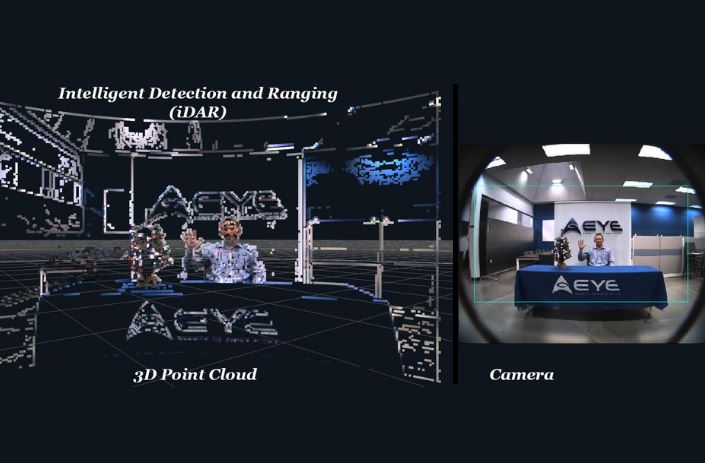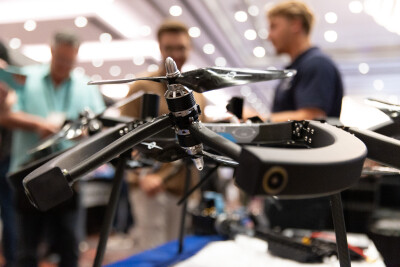AEye Inc. is building a hybrid 3D sensor that could bring rapid, dynamic perception and path planning to the automotive industry.
After debuting its own solid state lidar sensor in 2013, and demonstrating the first 360-degree, vehicle-mounted, solid-state LiDAR system in 2017, AEye recently unveiled its new form of intelligent data collection: iDAR (Intelligent Detection and Ranging). By combining a proprietary low-cost, solid-state beam-steering 1550nm MOEMS-based lidar, a low-light camera, and embedded artificial intelligence – similar to TetraVue’s 4D LiDAR technology setup – the company promises to deliver higher accuracy, longer range, and more intelligent information to help optimize path planning software.
What AI can do
AEye’s iDAR intelligently prioritizes and interrogates co-located pixels (2D) and voxels (3D) within a frame, which enables it to target and identify objects within a scene 10-20x more effectively than lidar-only sensing solutions. This allows for faster and better prediction of the behavior and intent of objects, cars, and pedestrians.
Furthermore, the iDAR’s embedded AI capabilities use thousands of existing and custom computer vision algorithms to improve its path planning software. For example, the system can identify objects, and then revisit them even within the same captured image frame. This gives the perception and path planning layers of the software the ability to make more sophisticated calculations—such as multi-directional velocity and acceleration vectors—simultaneously.
“These first generation systems silo sensors and use rigid asymmetrical data collection that either oversample or undersample information,” said Luis Dussan, AEye founder and CEO, in reference to competing solutions. “This dynamic exposes an inherent tradeoff between density and latency in legacy sensors, which restricts or eliminates the ability to do intelligent sensing. For example, while traditional 64 line systems can hit an object once per frame (every 100ms or so), we can, with intelligent sensing, selectively revisit any chosen object twice within 30 microseconds – an improvement of 3000X. This embedded intelligence optimizes data collection, so we can transfer less data while delivering better quality, more relevant content.”
To avoid oversample or undersample of information, AEye’s iDAR technology mimics how a human’s visual cortex focuses on and evaluates potential driving hazards: It uses a distributed architecture and edge processing to track targets and objects of interest dynamically, while always assessing general surroundings.
2D+3D, real-time sensing
iDAR overlays 2D images on 3D point clouds to create True Color LiDAR. While traditional lidar requires post-processing, which causes delays and computational drain due to registration and alignment challenges, iDAR’s True Color lidar offers segmentation and co-location of color and distance information, with no registration processing. This results in “greater accuracy and speed in interpreting signage, emergency warning lights, brake versus reverse lights, and other scenarios that have historically been tricky for legacy lidar-based systems to navigate.”
AEye’s technology enables customizable data collection in real-time, allowing the system to adapt to the environment and dynamically change its performance based on the customer’s/host’s applications and needs. The company says their system is capable of performing a wide range of tasks, for instance it can “emulate legacy systems, define regions of interest, focus on threat detection, and/or be programmed for variable environments, such as highway or city driving.”
Final details
However, the company hasn’t talked about how much one sensor costs, and there’s an obvious disadvantage to it: A 70-degree field-of-view means you will need multiple sensors set up around a car to achieve 360º.
Along with this news, AEye also announced the iDAR Development Partner Program for OEM customers, Tier 1 partners, and universities interested in integrating iDAR into their vehicles. The company also mentioned they are already working with “one of the largest vehicle manufacturer OEMs on the planet”, and that it will showcase iDAR and announce its automotive product suite at CES 2018.






